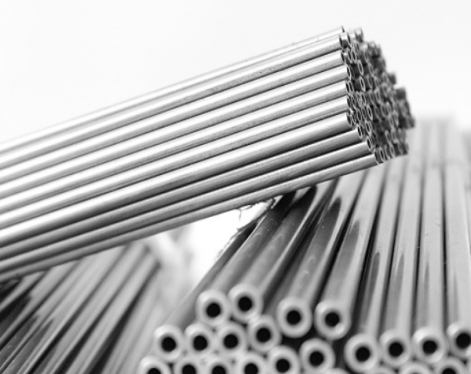The reason why hot-dip galvanized seamless steel pipes produce color difference is because iron and zinc react violently. The violent reaction of Fe-Zn turns the original complete coating consisting of an alloy layer and a pure zinc layer into an alloy layer without a pure zinc layer. Gray or dark gray is the color of iron-zinc alloy. In addition, if the quality of the zinc solution deteriorates, the iron content in the zinc solution will increase, and the pure zinc layer on the surface after galvanizing will appear gray due to the iron content, causing color difference.
Compared with ordinary steel pipes, its outer layer is coated with a layer of zinc. Because of this layer of zinc, a very good protective film is formed on the outer layer of the pipe, which can prevent the steel pipe from rusting and corroding. Generally speaking, after galvanizing, the outer layer of the pipe will form a very rough outer protective film, so the surface of the hot-dip galvanized pipe is very rough, but this does not affect the performance of the hot-dip galvanized pipe.

(2) The content of aluminum and other metal elements in the zinc liquid is too small, and the iron-zinc reaction cannot be effectively suppressed for galvanizing of active steel and other materials.
(3) The iron content in the zinc liquid increases, making the quality of the zinc liquid worse.
⑵ Adjust the composition of the zinc solution to control the aluminum and nickel contents within the appropriate range;
⑶ Shorten the zinc dipping time as much as possible;
⑷Add water to cool as soon as possible after taking it out of the pot.
⑸ Purify the zinc liquid in time to ensure the quality of the zinc liquid.
Purpose: Used for low-pressure fluid transportation and mechanical structures such as water, sewage, gas, fire protection, air, oil, heating steam, etc.
1.What is hot-dip galvanized seamless pipe?
Hot-dip galvanized seamless pipe: On the basis of seamless pipes, the inside and outside are hot-dip galvanized, so that the inner and outer walls of the steel pipe are coated with zinc layers at the same time, which greatly improves the anti-corrosion performance of the steel pipe, reaching about 20 times that of ordinary steel pipes. Hot-dip galvanized pipe has good corrosion resistance.Compared with ordinary steel pipes, its outer layer is coated with a layer of zinc. Because of this layer of zinc, a very good protective film is formed on the outer layer of the pipe, which can prevent the steel pipe from rusting and corroding. Generally speaking, after galvanizing, the outer layer of the pipe will form a very rough outer protective film, so the surface of the hot-dip galvanized pipe is very rough, but this does not affect the performance of the hot-dip galvanized pipe.
(1)What is hot dip galvanizing?
Hot-dip galvanizing, also known as hot-dip galvanizing, is a surface treatment method that immerses metal products in molten zinc to form a dense zinc layer on the surface of the product. Hot-dip galvanizing first appeared at the end of the 19th century. At that time, it was mainly used to protect iron products from corrosion. With the advancement of science and technology, hot-dip galvanizing has gradually become an important process for metal surface treatment and has been widely used in various fields.
(2)What is seamless pipe?
Seamless pipes are metal pipes with hollow sections and no seams. This kind of steel pipe has high precision and long service life. Because it is made of a whole round steel with holes, it can maintain excellent corrosion resistance and oxidation resistance under high temperature and pressure. In addition, seamless pipes have excellent endurance and can withstand various complex environments and media, such as high strength, high temperature and high pressure. However, the production cost of seamless pipes is high, the manufacturing process is complicated, and it is difficult to process small-diameter and thin-walled seamless pipes.2. Causes of color difference in hot-dip galvanized seamless steel pipes
(1) The material of the plated parts contains more elements such as carbon, silicon, sulfur, and phosphorus. The electrochemical reaction between iron and zinc is due to the inert electrode formed by such elements, which increases the relative potential and intensifies the iron-zinc reaction.(2) The content of aluminum and other metal elements in the zinc liquid is too small, and the iron-zinc reaction cannot be effectively suppressed for galvanizing of active steel and other materials.
(3) The iron content in the zinc liquid increases, making the quality of the zinc liquid worse.
3. Improvement measures
⑴Choose the appropriate galvanizing temperature according to the material;⑵ Adjust the composition of the zinc solution to control the aluminum and nickel contents within the appropriate range;
⑶ Shorten the zinc dipping time as much as possible;
⑷Add water to cool as soon as possible after taking it out of the pot.
⑸ Purify the zinc liquid in time to ensure the quality of the zinc liquid.
4.Use of hot-dip galvanized seamless pipe
Hot-dip galvanized seamless steel pipes are widely used as transportation pipelines or metal structures in fire protection engineering, natural gas transportation, petroleum processing industry, water conservancy engineering construction, and residential construction. The product is used in accordance with the American standard ASTM A53, the British standard BS1387, the Chinese standard GB/T3091 and GB/T13793, and is not suitable for use in non-neutral environments such as acids, alkalis, and salts.Purpose: Used for low-pressure fluid transportation and mechanical structures such as water, sewage, gas, fire protection, air, oil, heating steam, etc.









